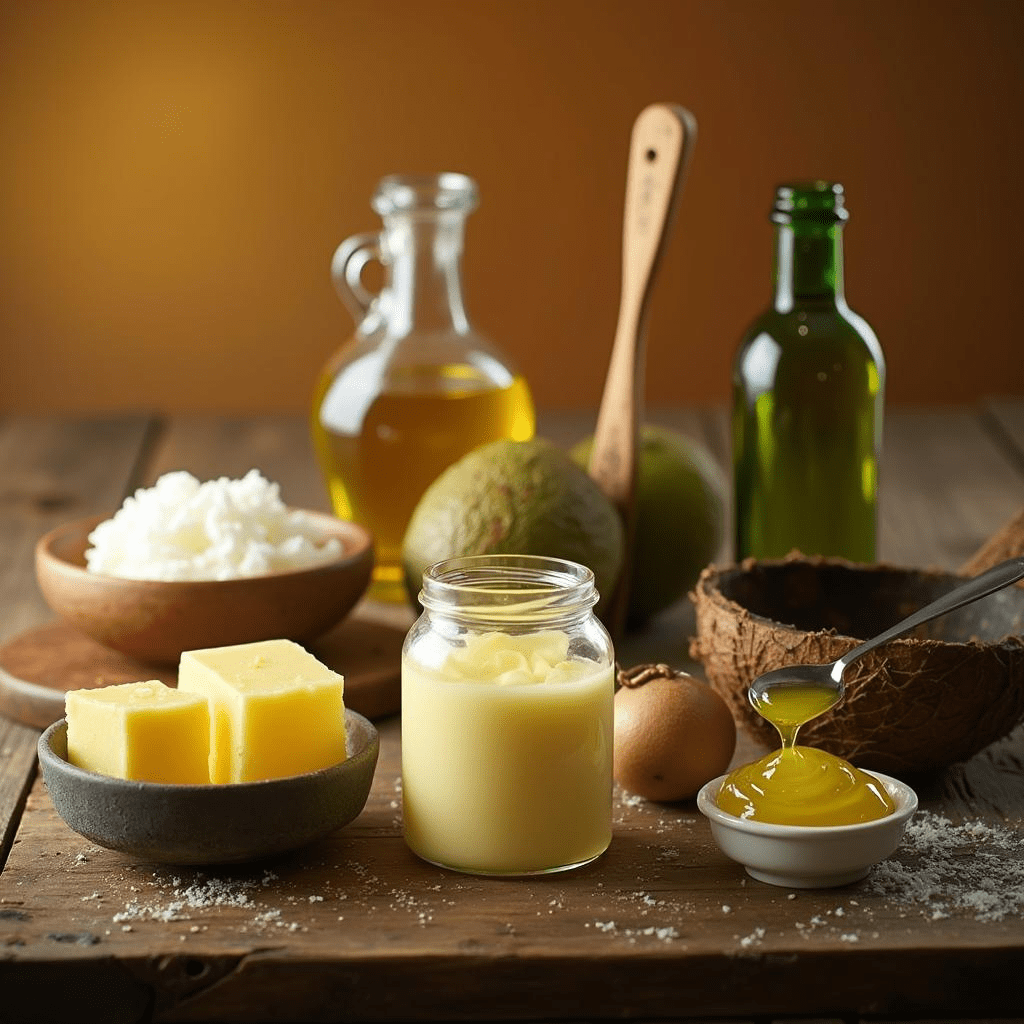Choosing the right cooking fat is essential for flavor, health, and cooking performance. While beef tallow is a fantastic traditional option, there are many other cooking fats available, each with unique benefits and uses. This guide reviews the top cooking fats, detailing their best uses, safety, and recommendations for various cooking methods.
1. Beef Tallow (Best for High-Heat Cooking & Rich Flavor)
Overview: Beef tallow is rendered beef fat, known for its high smoke point (400°F/204°C), rich flavor, and nutritional benefits. Grass-fed tallow contains omega-3 fatty acids and fat-soluble vitamins (A, D, E, K).
Best Uses:
- Frying and searing meats (steaks, burgers, fried chicken)
- Roasting vegetables (potatoes, carrots, root veggies)
- Baking (biscuits, pie crusts, tortillas)
- Deep-frying (fries, crispy foods)
Pros:
- High smoke point makes it ideal for frying
- Adds deep, savory flavor to dishes
- Long shelf life and highly stable
- Nutrient-dense and free from artificial additives
Cons:
- Not suitable for plant-based diets
- Needs to be sourced from grass-fed cattle for best health benefits
Recommended For: High-heat cooking, frying, and roasting.
2. Ghee (Clarified Butter) (Best for Traditional Indian Cooking & High Heat)
Overview: Ghee is butter that has been clarified by removing water and milk solids, making it lactose-free and highly stable.
Best Uses:
- Sautéing and frying (Indian dishes, eggs, meats)
- Baking (substitute for butter or oil)
- Spreading on toast or mixing into coffee
Pros:
- High smoke point (485°F/252°C)
- Lactose-free, making it easier to digest
- Rich in conjugated linoleic acid (CLA) and butyrate for gut health
Cons:
- High in saturated fat
- Some people may not like the strong, nutty flavor
Recommended For: Traditional cooking, frying, and keto diets.
3. Coconut Oil (Best for Baking & Medium-Heat Cooking)
Overview: Coconut oil is a plant-based fat with a smoke point of 350°F/177°C. It contains medium-chain triglycerides (MCTs), which may support metabolism.
Best Uses:
- Baking (cookies, cakes, muffins)
- Stir-frying vegetables
- Dairy-free substitute for butter
- Bulletproof coffee and smoothies
Pros:
- Naturally anti-inflammatory and antibacterial
- Great for dairy-free and vegan cooking
- Adds a mild coconut flavor to food
Cons:
- Low smoke point means it’s not ideal for deep frying
- Can impart a coconut flavor that may not work for all dishes
Recommended For: Baking, light frying, and plant-based diets.
4. Olive Oil (Extra Virgin & Light) (Best for Dressings & Low-Heat Cooking)
Overview: Extra virgin olive oil (EVOO) is a heart-healthy oil high in monounsaturated fats and antioxidants. However, it has a lower smoke point (~375°F/190°C) compared to refined olive oils.
Best Uses:
- Salad dressings and drizzles
- Light sautéing (vegetables, fish, chicken)
- Dipping bread
- Mediterranean-style cooking
Pros:
- Rich in antioxidants and heart-healthy fats
- Versatile and widely available
- Extra virgin is cold-pressed with no chemical processing
Cons:
- Not suitable for high-heat cooking
- Some lower-quality olive oils are mixed with cheaper oils
Recommended For: Low-heat cooking, dressings, and Mediterranean diets.
5. Avocado Oil (Best for High-Heat Cooking & Versatility)
Overview: Avocado oil is extracted from the avocado fruit and has a high smoke point (520°F/271°C), making it great for all cooking methods.
Best Uses:
- High-heat frying and roasting
- Salad dressings
- Grilling meats and vegetables
Pros:
- One of the highest smoke points of any oil
- Neutral flavor that doesn’t overpower dishes
- Rich in monounsaturated fats for heart health
Cons:
- Expensive compared to other oils
- Some brands dilute it with lower-quality oils
Recommended For: High-heat cooking and clean eating.
6. Butter (Best for Flavor & Baking)
Overview: Traditional butter is a staple in many kitchens, providing rich flavor and a creamy texture. It contains milk solids, which means it burns at lower temperatures.
Best Uses:
- Baking (cakes, cookies, pastries)
- Pan-frying at low to medium heat
- Melting over vegetables and meats
Pros:
- Adds incredible flavor to foods
- Contains fat-soluble vitamins A, D, E, and K
- Works well in baking and sauces
Cons:
- Low smoke point (~300°F/150°C)
- Can burn easily due to milk solids
Recommended For: Baking and low-heat cooking.
7. Vegetable & Seed Oils (Canola, Soybean, Sunflower, Corn) (Not Recommended)
Overview: These oils are highly processed and often extracted using chemical solvents. While they have high smoke points, they are prone to oxidation and can contain trans fats.
Best Uses:
- Industrial food production
- Processed and fast food frying
Pros:
- Cheap and widely available
- High smoke points (~400°F/204°C)
Cons:
- Highly processed and often chemically extracted
- Unstable under heat, leading to the formation of harmful compounds
- May contain inflammatory omega-6 fatty acids
Not Recommended: These oils should be avoided when possible due to their processing methods and potential health risks.
Final Thoughts
Choosing the right cooking fat depends on your needs:
- Best for high-heat frying: Avocado oil, beef tallow, ghee
- Best for baking: Butter, coconut oil
- Best for flavor: Butter, olive oil, beef tallow
- Best for heart health: Olive oil, avocado oil
- Best for budget-conscious cooking: Beef tallow, coconut oil
Avoid processed seed oils when possible and opt for natural, minimally processed fats that support overall health. By selecting the right fat for the right cooking method, you can enhance flavor, improve nutrition, and enjoy cooking safely and deliciously.
